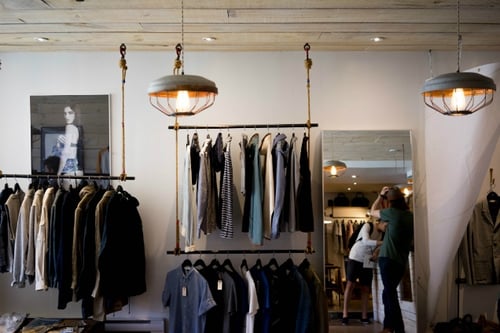
Customer friendliness: either you’ve got it, or you don’t?
Geschreven door Marijn de Geus | January 20, 2016Stores, authorities, banks, call centres, catering... All are sometimes bothered by it: low scores on customer friendliness. Social media, (online) reviews and NPS measurements are exposing customer experience without mercy. Recently, this was featured in the Dutch Vertrouwensmonitor Banken (Banking Confidence Monitor). Should we just accept this, or should we remain hopeful?
 ‘Everyone is customer friendly in their own way’
‘Everyone is customer friendly in their own way’
Even though there isn’t any historical data, we know that previously, customer friendliness wasn’t seen as being particularly relevant when managing large groups of personnel on the frontline. This is not so surprising, because almost everyone found it, and still finds it, hard to give direct feedback on someone’s communication. Even though there was room for this, a clear normative framework was lacking. Everyone could have their own definition of customer friendliness, and even the rudest person was able to say that their own approach was customer friendly. In addition, traditional classroom training offered no measurable improvement of this skill or other communication skills, so why would you force large groups to do such an often expensive training?
Learning by doing
This has changed now. We have asked a group of managers and professionals from the sectors mentioned above if customer friendliness is just something that you either have, or you don’t have. A large majority of respondents (68%) did not agree with this statement. The fact that customer friendliness is, in fact, trainable, has everything to do with the combination of structural measurements and functioning solutions that has become available recently. The modern measurements assess sub-skills and they do so on an individual level. Suddenly there is a clear normative framework as a guide. The next step is a working and affordable learning solution, characterised by ‘learning by doing’ and insight into progress.
The science behind customer friendliness
Customer friendliness consists of two aspects: you need to be able to empathise with your customer’s needs, and you have to have the right skills to meet the customer’s needs accurately. Empathising stems from empathy, which is dependent on the testosterone level that we were exposed to in the uterus. Indeed, men on average have less empathy than women. However, this can be developed! Research shows that people who imitate others consciously will understand better how the other must be feeling. The development of empathy in the field of training is at the moment still mostly an unexplored area, but the development of customer contact skills isn’t! So, how is it trained?
Self-assessment and customer proof
We know from classroom trainings that of all components, roleplay has the most impact. However, they are also quite often too short, too unspecified and many people hate doing this in front of a group of people. Online, there are no such problems. People can watch and perform specified roleplays every week with the modern technology, on their own smartphone or tablet and in the time and place that are convenient to them. Meanwhile they assess themselves on the given norm. The real proof can be inferred from, again, the NPS, social media and reviews supplied by the customer. Because of this, the training questions are becoming more concrete, for example: “at the moment we have an NPS of -10, but we want it to be +20 at least.” Therefore, development in customer friendliness is demonstrated by the level of the employee, who scores higher on the trained sub-areas, as well as by the improved assessment by the customer.
This blog has been published first on CustomerFirst.nl. How do you see this development in customer satisfaction and training employees? Would you like to read more on how we help companies improve customer friendliness? Download the Coolblue case study below!



